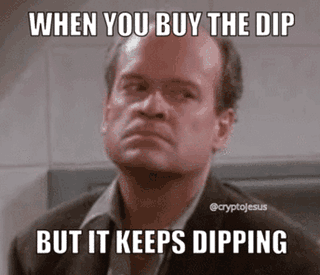All Out August 25th: Fake Marks, Argentine Peso Drops (Again), ESG and Momentum
All-In with Chamath, Jason, Sacks & Friedberg Transcript
We’re regular listeners of the All-In podcast and last week they had Bill Gurley and Brad Gerstner on the podcast. Bill Gurley is a general partner at Benchmark, which is a large venture capital firm which has been one of the most successful venture firms in existence. They invested in several high profile unicorns very early and have done great for their investors. In this podcast Gurley brings up a very interesting point which we’ve talked several times before. We have mostly focused on the private equity side of things but the same concept applies (probably even more) to venture capital.
He basically says that everybody knows VC valuations are way off but nobody has the incentive to correct them. The company founder wants to maintain his headline valuations, it helps him look good and keep his employees motivated. The VC fund manager wants to keep high valuations because it makes his fund look good and makes it easier to raise more money. The VC investor also wants to keep valuations high. The investor is either a high net worth individual who might want to pretend they haven’t lost money. Or an institutional investor, in which the person making the investment decisions isn’t the owner of the money. And in this case his compensation, bonus, and probably even job depend on the investments doing well, so there’s no incentive to show real marks.
The only people incentivized to show the truth are public markets managers (like us) which have to mark their portfolios to market prices every day. If we marked our portfolios like VC/PE managers do, we’d be sued for fraud.

Argentina struggles to avoid economic collapse after shock primary win
Another election, another large currency devaluation for Argentina. We wrote about Argentina a couple of months ago talking about its multiple dollars and multiple defaults. At the time, the official exchange rate was around 240 to the dollar and the black-market rate was roughly double that around 470. The first time we wrote about Argentina was all the way back in 2021 when the exchange rate was ~100 and in that piece, we mentioned an event which had happened in 2019 where the currency went from ~40 to 60 practically overnight, after a primary election took place. Well it happened again, a couple of weeks ago presidential candidate Javier Milei surprised everybody by winning the primary. The day after, the peso dropped by ~22%.
Nothing much to say here, just to add to the list of examples of events nobody saw coming and happened too fast to react to. Think about this next time you’re trying to make a decision based on getting a prediction right. This isn’t the first time this has happened in Argentina (probably won’t be the last), and even they were surprised. Nobody saw this coming…again.

Companies with good ESG scores pollute as much as low-rated rivals
Regular readers know we’re not proponents of traditional ESG investing. By traditional we mean just buying funds that have an ESG label slapped on them and calling it a day. There are problems with measurement of ESG metrics (ratings from different providers often don’t correlate with one another), there are different preferences in the relative importance of the E, S, and G, etc. Proponents often talk about how ESG should perform better (which we don’t believe to be true and have written about here), and many other “benefits” which we don’t agree with. We think ESG is important but the best way on how to affect change is with your spending dollars and not your investment dollars. By this we mean that if you want to fight climate change, then drive less, fly less, etc. Don’t just say I sold my Exxon stock and be done with it. Like the people that go to the World Economic Forum in Davos to talk about climate change and they all fly there by private jet…
New research has found that the correlation between ESG scores and carbon intensity is close to zero (it’s 4% to be exact). According to MSCI (an ESG ratings provider), ESG scores should be used to measure a company’s resilience to financial risks related to ESG, not to measure a company’s impact on climate change. It may be that ESG scores are misunderstood. However, if ESG scores are meant to be a measure of risk, then they are even less helpful. If we believe markets are efficient (which we don’t 100% but they’re not wildly inefficient either), then these risks should already be priced in, and the ratings shouldn’t really matter. So what we thought ESG measured isn’t really so, and what they intend to measure is already priced in.

Quant-Momentum ETF Is Getting Crushed Even as Stocks Shoot Up
We are big believers in quantitative investing. By this we mean making investment decisions based on data and research and not on gut feeling. In quant finance there are so called stock factors that can be created into investment strategies. A factor is basically a characteristic of a stock that has historically proven to outperform the broad market. Examples of factors are value, momentum, quality etc. There are tens or even hundreds of ETFs that implement factor strategies. And there are thousands of ways of defining factors and implementing them.
For example, momentum measures how much a stock has gone up recently. The theory behind momentum is that stocks that have gone up recently tend to keep going up and those that have dropped tend to keep dropping. But how do you measure if something has gone up? Over what time period? How long do you hold the stock? When do you sell? How many stocks do you buy? How do you weight each stock? When do you rebalance? Like you see there are hundreds even thousands of possible combinations, many of which are valid.
All this to say that implementation matters. Just because something says “momentum” or “value”, how it’s implemented can make a huge difference! The ETF in the article, MTUM, is the largest momentum ETF out there but its implementation is subpar. The fund only rebalances every 6 months. To realistically capture momentum, it should rebalance every month or less.
So why is it the largest if its implementation is subpar? Because many investors and advisors don’t really know or care about the nuances and just buy it because it’s an ETF from Blackrock. And nobody ever got fired for recommending investing with Blackrock.





